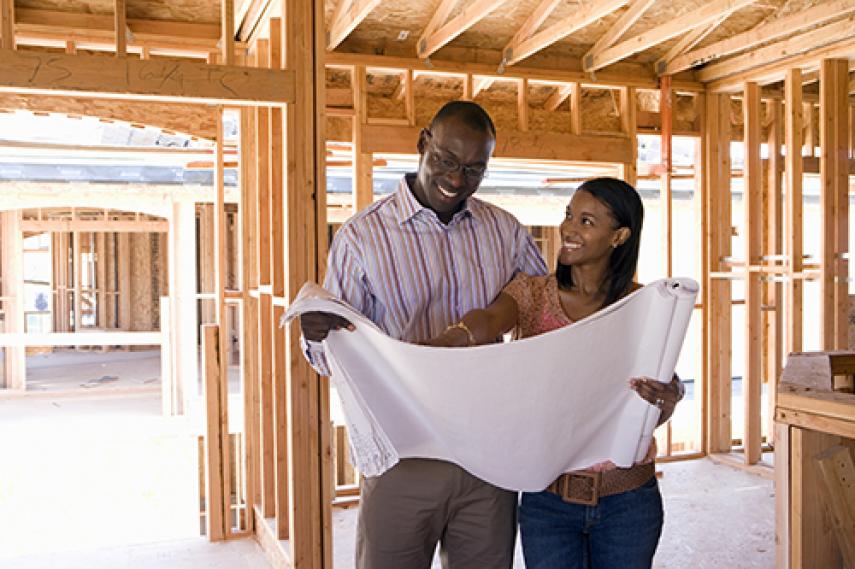
Home construction loans provide families and individuals with the ability to finance new home construction projects. The construction period is usually short, typically lasting one year or less in most cases, and once the project is complete, the loan is converted or refinanced with a traditional mortgage.
Loan Basics
Construction loans typically cover both the cost of the property and the construction costs of the house. These loans require more direct oversight and involvement from lenders than traditional home loans.
Expect to provide lenders with documents and timetables, including the following:
- Plans for building the home.
- Estimated schedule for various stages of construction.
- A budget for the total costs of constructing the home.
The lender will require additional documentation about the building process, such as the names of the builder or contractors performing the work. In most cases, lenders will release funds in stages after checking on the progress to verify the completion of a construction phase. Loan funds are used to pay contractors involved in that phase. Throughout the process, it is good to remember that lenders are partnering with you in the construction process and have a financial stake in its outcome.
During the construction phase of the project, borrowers will typically make interest-only payments on the loan. The repayment of the loan usually takes place when construction is complete, and a traditional mortgage replaces the construction loan either by conversion to a traditional mortgage or refinanced into a traditional mortgage.
Different Loan Types
Essentially there are two different types of home construction loans:
- Construction-to-Permanent Loans
- Stand-Alone Construction Loans
Construction-to-permanent loans are often desirable for people who intend to occupy their homes upon the completion of construction. That is because they allow you to combine the construction loan with the standard mortgage loan, which means you are not required to refinance your mortgage at a later date.
With this type of loan, you have the benefit of locking in a low-interest rate from the start. Once the building is complete, the lender converts it into a traditional mortgage at the locked-in interest rate. With this mortgage, you have the option of choosing a fixed rate or ARM (adjustable rate mortgage) and may choose between a 15- or 30-year term.
Stand-alone construction loans are an outstanding choice for people who are building homes with the intention of reselling once the home is complete or are not concerned about the interest rates changing before the property is complete and a permanent mortgage can be placed on the property. This means that if you do intend to live in the home post-construction, you will have to obtain a mortgage independently. Another downside with this type of loan is that you pay closing costs (and the associated fees) twice: first, on the closing of the initial stand-alone construction loan; second, when you secure the mortgage for the home.
Understanding the basics about home construction loans can help you to choose the loan that meets your needs today and in the future. Use the information here to help you make wise buying choices when exploring your options for a home construction loan.
